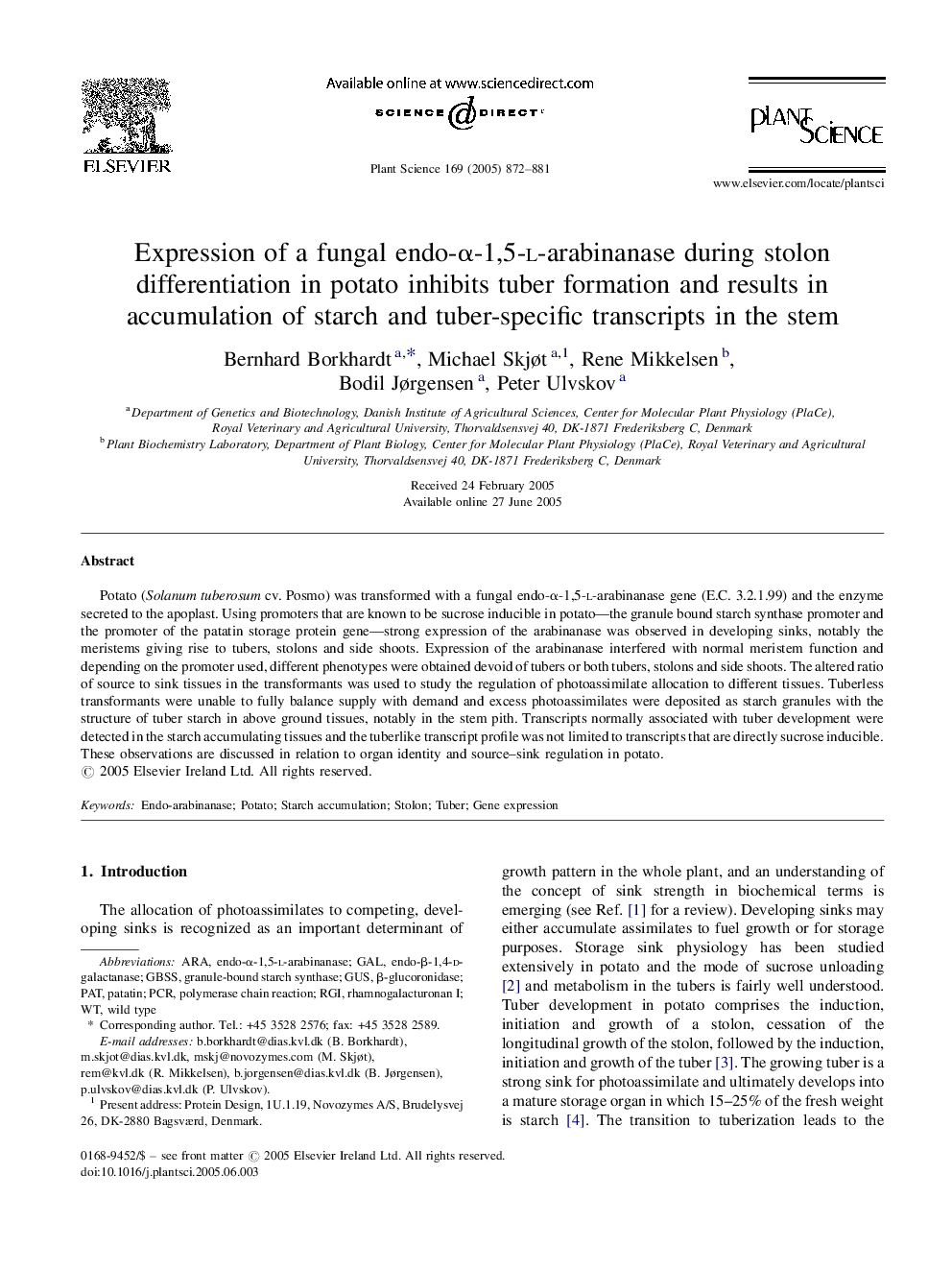| Article ID | Journal | Published Year | Pages | File Type |
|---|---|---|---|---|
| 10841600 | Plant Science | 2005 | 10 Pages |
Abstract
Potato (Solanum tuberosum cv. Posmo) was transformed with a fungal endo-α-1,5-l-arabinanase gene (E.C. 3.2.1.99) and the enzyme secreted to the apoplast. Using promoters that are known to be sucrose inducible in potato-the granule bound starch synthase promoter and the promoter of the patatin storage protein gene-strong expression of the arabinanase was observed in developing sinks, notably the meristems giving rise to tubers, stolons and side shoots. Expression of the arabinanase interfered with normal meristem function and depending on the promoter used, different phenotypes were obtained devoid of tubers or both tubers, stolons and side shoots. The altered ratio of source to sink tissues in the transformants was used to study the regulation of photoassimilate allocation to different tissues. Tuberless transformants were unable to fully balance supply with demand and excess photoassimilates were deposited as starch granules with the structure of tuber starch in above ground tissues, notably in the stem pith. Transcripts normally associated with tuber development were detected in the starch accumulating tissues and the tuberlike transcript profile was not limited to transcripts that are directly sucrose inducible. These observations are discussed in relation to organ identity and source-sink regulation in potato.
Keywords
Related Topics
Life Sciences
Agricultural and Biological Sciences
Plant Science
Authors
Bernhard Borkhardt, Michael Skjøt, Rene Mikkelsen, Bodil Jørgensen, Peter Ulvskov,
